
sap-visits-cdg.mov (12sec, 9mb)
A hyperopia drift inspired by Alan’s talk:

Alan Curtis Kay (born May 17, 1940) is an American computer scientist
currently head of Viewpoints Institute.

the removal of a body extremity by trauma, prolonged constriction, or surgery

Apollo set several major human spaceflight milestones
research field at the frontier between human-computer interaction, psychology, ergonomics and neuroscience, that aims at creating revolutionary human-computer interactions.
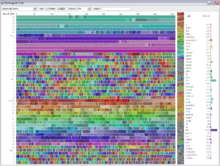
term for a collection of data sets so large and complex that it becomes difficult to process using on-hand database management tools or traditional data processing applications.
DARPA was authorized by President Eisenhower in 1958 for the purpose of forming and executing research and development projects to expand the frontiers of technology and science, and able to reach far beyond immediate military requirements
Concerning information processing, DARPA made great progress, initially through its support of the development of time-sharing (all modern operating systems rely on concepts invented for the Multics system, developed by a cooperation among Bell Labs, General Electric and MIT, which DARPA supported by funding Project MAC at MIT with an initial two-million-dollar grant)
The Mansfield Amendment of 1973 expressly limited appropriations for defense research (through ARPA/DARPA) to projects with direct military application. Some contend that the amendment devastated American science, since ARPA/DARPA was a major funding source for basic science projects of the time; the National Science Foundation never made up the difference as expected.
The resulting "brain drain" is also credited with boosting the development of the fledgling personal computer industry. Many young computer scientists fled from the universities to startups and private research labs like Xerox PARC.
notable for his work on the psychology of judgment and decision-making, behavioral economics and hedonic psychology.
It must have been late 1941 or early 1942. Jews were required to wear the Star of David and to obey a 6 p.m. curfew. I had gone to play with a Christian friend and had stayed too late. I turned my brown sweater inside out to walk the few blocks home. As I was walking down an empty street, I saw a German soldier approaching. He was wearing the black uniform that I had been told to fear more than others – the one worn by specially recruited SS soldiers. As I came closer to him, trying to walk fast, I noticed that he was looking at me intently. Then he beckoned me over, picked me up, and hugged me. I was terrified that he would notice the star inside my sweater. He was speaking to me with great emotion, in German. When he put me down, he opened his wallet, showed me a picture of a boy, and gave me some money. I went home more certain than ever that my mother was right: people were endlessly complicated and interesting.
Hedonic psychology...is the study of what makes experiences and life pleasant or unpleasant. It is concerned with feelings of pleasure and pain, of interest and boredom, of joy and sorrow, and of satisfaction and dissatisfaction. It is also concerned with the whole range of circumstances, from the biological to the societal, that occasion suffering and enjoyment.


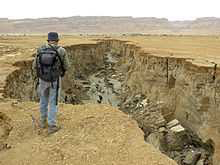
Erosion is the process by which soil and rock are removed from the Earth's surface by exogenic processes such as wind or water flow, and then transported and deposited in other locations.
Gully erosion occurs when runoff water accumulates and rapidly flows in narrow channels during or immediately after heavy rains or melting snow, removing soil to a considerable depth
virtually the entire landscape is sterile of vegetation, with gully erosive furrows typically in excess of 50 metres (160 ft) deep and 1 kilometre (0.6 miles) wide
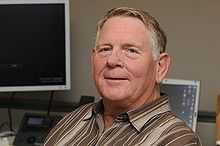
American engineer and inventor most notable for the invention of the laser printer and color management
In 1969, Starkweather invented the laser printer at Xerox's Webster research center. He collaborated on the first fully functional laser printing system at Xerox PARC in 1971
Starkweather joined Microsoft Research in 1997
American economist, and a recipient of the 1989 John von Neumann Theory Prize and the 1990 Nobel Memorial Prize in Economic Sciences.
In 1952, Harry Markowitz went to work for the RAND Corporation, where he met George Dantzig. With Dantzig's help, Markowitz continued to research optimization techniques, further developing the critical line algorithm for the identification of the optimal mean-variance portfolios, relying on what was later named the Markowitz frontier
received a PhD from the University of Chicago with a thesis on the portfolio theory
A Markowitz Efficient Portfolio is one where no added diversification can lower the portfolio's risk for a given return expectation (alternately, no additional expected return can be gained without increasing the risk of the portfolio). The Markowitz Efficient Frontier is the set of all portfolios that will give the highest expected return for each given level of risk. These concepts of efficiency were essential to the development of the Capital Asset Pricing Model.
The Internet Society has used a short form Galactic Network for the same thing.
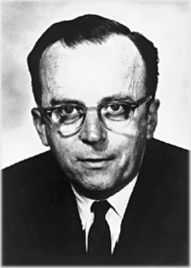
an American psychologist [1] and computer scientist considered one of the most important figures in computer science and general computing history
"computing's Johnny Appleseed", for having planted the seeds of computing in the digital age.
He formulated the earliest ideas of a global computer network in August 1962 at BBN, in a series of memos discussing the "Intergalactic Computer Network" concept. These ideas contained almost everything that the Internet is today, including cloud computing.
a theory of finance that attempts to maximize portfolio expected return for a given amount of portfolio risk, or equivalently minimize risk for a given level of expected return, by carefully choosing the proportions of various assets. Although MPT is widely used in practice in the financial industry and several of its creators won a Nobel memorial prize for the theory,[1] in recent years the basic assumptions of MPT have been widely challenged by fields such as behavioral economics.
Moonshot (Google), a Google project to be realized long-term (10+ years). See also: Google X

laser printing, Ethernet, the modern personal computer, graphical user interface (GUI), object-oriented programming, ubiquitous computing, amorphous silicon (a-Si) applications, and advancing very-large-scale-integration (VLSI) for semiconductors.
Much of PARC's early success in the computer field was under the leadership of its Computer Science Laboratory manager Bob Taylor, who guided the lab as associate manager from 1970 to 1977 and as manager from 1977 to 1983.
Xerox has been heavily criticized (particularly by business historians) for failing to properly commercialize and profitably exploit PARC's innovations.
2011 book by Nobel Memorial Prize winner in Economics Daniel Kahneman
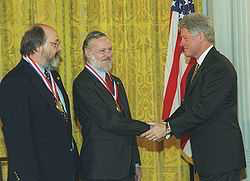
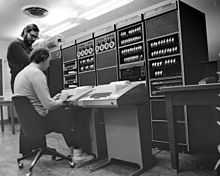
Originally, Unix was meant to be a programmer's workbench to be used for developing software to be run on multiple platforms
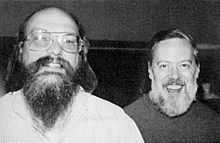
a set of cultural norms and philosophical approaches to developing small yet capable software based on the experience of leading developers of the Unix operating system
short, simple, clear, modular, and extendable code
This is the Unix philosophy: Write programs that do one thing and do it well. Write programs to work together. Write programs to handle text streams, because that is a universal interface.
"Unix is simple. It just takes a genius to understand its simplicity." – Dennis Ritchie
"Unix was not designed to stop its users from doing stupid things, as that would also stop them from doing clever things." – Doug Gwyn
"Unix never says 'please'." – Rob Pike
"Unix is user-friendly. It just isn't promiscuous about which users it's friendly with." – Steven King
"Those who don't understand Unix are condemned to reinvent it, poorly." – Henry Spencer